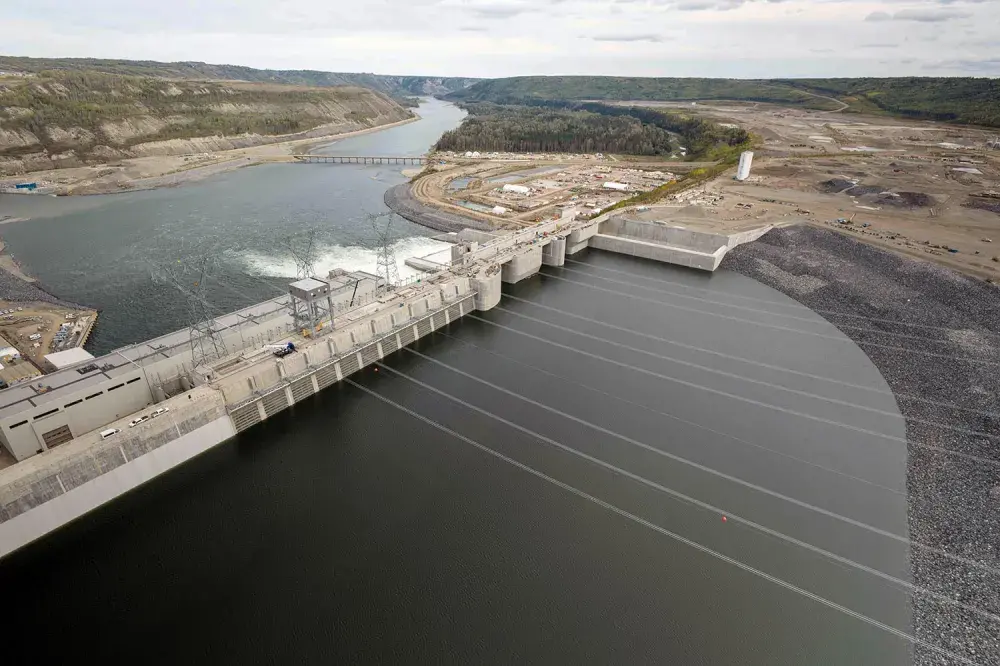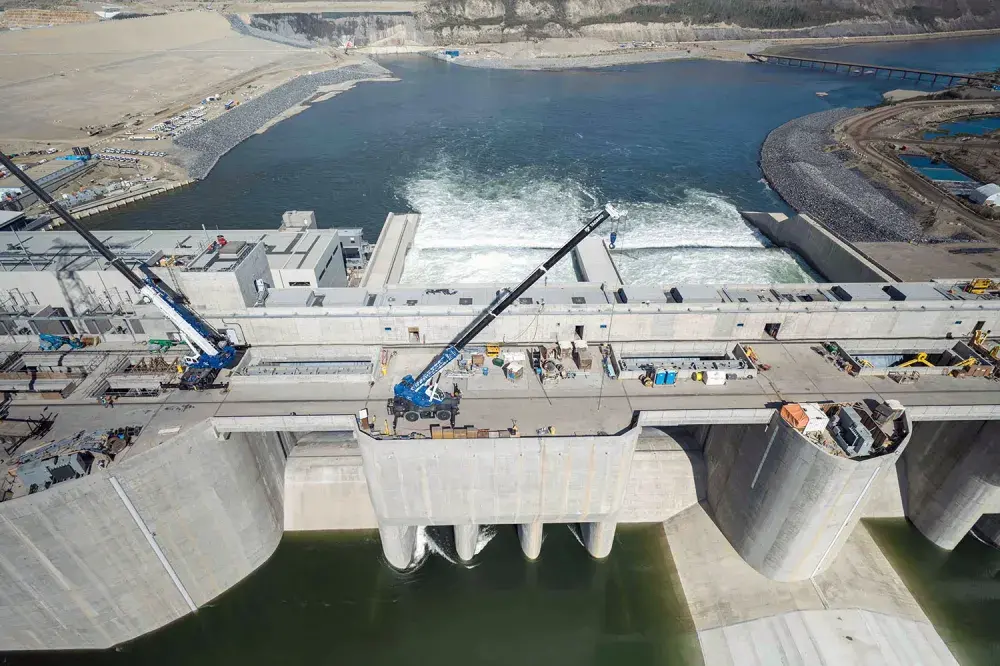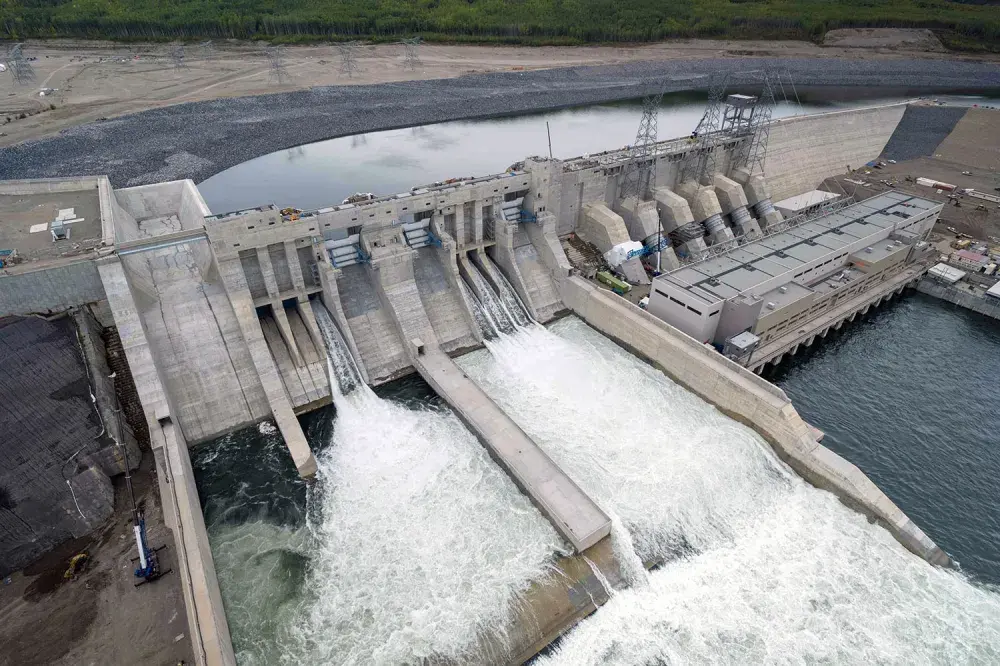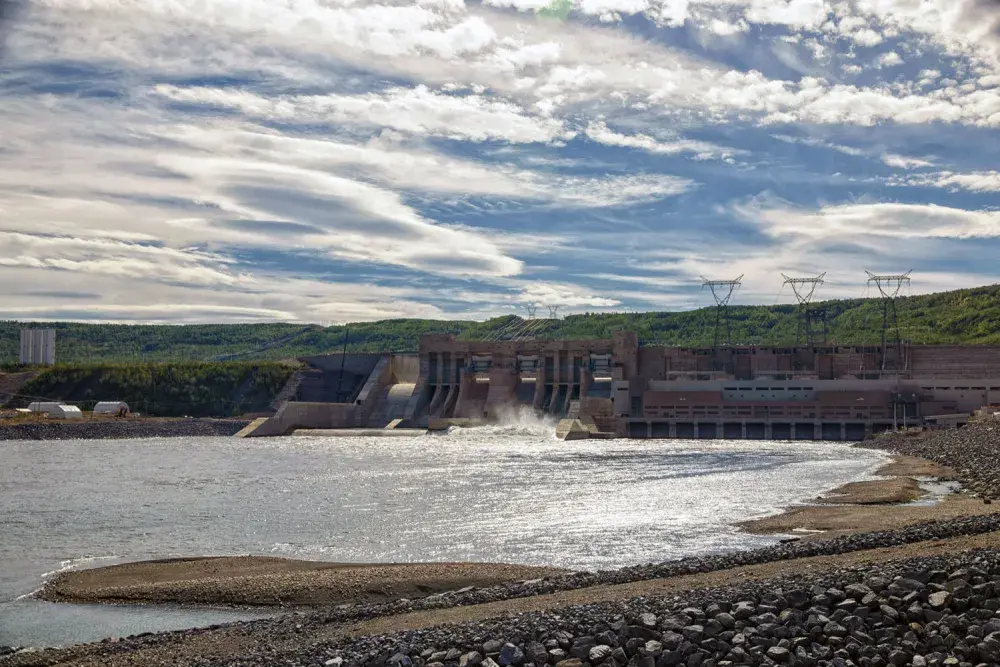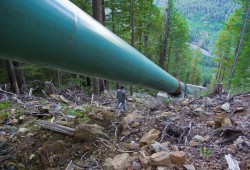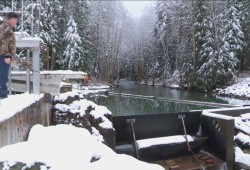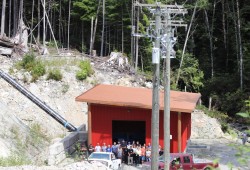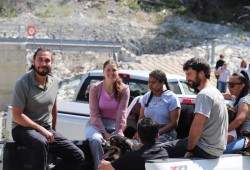BC Hydro saw “a strong response” for its call to diversify the province’s sources of power generation, but it appears that for the time being Vancouver Island will remain heavily reliant on mainland sources for electricity.
Closing on Sept. 16, the competitive call for power was the first issued by the provincial utility in over 15 years. For the first time BC Hydro introduced the stipulation that the proposed projects have “a meaningful First Nations partnership component” through at least 25 per cent Indigenous ownership.
“The First Nations economic participation model was developed in collaboration with First Nations to ensure the call creates opportunities for meaningful economic benefits, in alignment with our United Nations Declaration on the Rights of Indigenous Peoples Implementation Plan,” stated BC Hydro in an email to Ha-Shilth-Sa.
For this call to power projects had to be large, with a minimum generation capacity of 40 megawatts – far more than any project undertaken so far in Nuu-chah-nulth territory. BC Hydro is looking to add five per cent to its current province-wide capacity, meeting a growing need for electricity that aligns with the province’s push towards electric vehicles and heat pumps in homes.
Twenty-one proposals came through, representing three times the total generation BC Hydro requires from this call for power. Seventy per cent of these prospective projects harness wind, with 20 per cent of the proposals generating solar power and the remainder being biomass and water generation. Eight of the proposals came from B.C.’s southern Interior, with four from the central Interior, five from the northern coast and two from the Peace region in the northeast.
Just two proposals came from Vancouver Island, where the total generating capacity meets just 23.6 per cent of the region’s peak demand. This means that three quarters of Vancouver Island’s electricity comes from elsewhere – mainly hydroelectric dams in the Interior that “act as batteries” for the province’s electricity needs, according to BC Hydro, while independent producers like the ones that submitted proposals to the utility in September serve as “intermittent renewables” when the power is available.
“The reservoirs store water and allow BC Hydro to ramp production up or down almost instantly, providing a reliable backup when the sun isn’t shining or the wind isn’t blowing,” stated the provincial utility of its 82 hydroelectric dams throughout the province.
Heavy reliance on large dams
Currently British Columbia’s newest major dam is filling up with water in preparation for starting operations next year. Located on the Peace River in B.C.’s northeast, when Site C fills the 83-kilometre reservoir will widen the existing expanse of water by two to three times. With a 1,100-megawatt generating capacity, Site C is set to be the province’s fourth largest hydroelectric producer, located 80 kilometres downstream from the larger W.A.C. Bennett Dam that began operating in 1968.
The project stands as a legacy of B.C.’s previous Liberal government, with a cost that has multiplied over its construction. A 2007 feasibility study projected Site C’s cost would be $6.6 billion, but since then the project has ballooned to an estimated $16 billion. As the reservoir will permanently alter the Peace River’s banks, flooding agricultural land in the region, multiple court challenges have arisen from landowners and First Nations on both sides of the B.C.-Alberta border, citing a breach of century-old treaty rights.
Chris Henderson is the founding Executive Director of Indigenous Clean Energy, a national organization that advocates to empower Aboriginal communities to claim a role in the sector. He sees the Site C development as being part of “a 10-year dark period in B.C.”, but BC Hydro’s recent call for power is indicating a willingness to open more opportunities for Indigenous-led ventures.
“We need more power, so there has to be more decentralized locations, decentralized ownership, because these are always going to be on a First Nation’s territory,”
“We will not be able to have a clean energy Canada, or not be able to deal with climate change, unless First Nation, Métis, Inuit people are at the centre of clean energy – and we’re well on that way to that reality,” added Henderson, who has identified 71 federal programs that support Indigenous participation in the renewable energy industry. “Clean energy fits with Indigenous culture, it fits with terms of protecting their lands, protecting their waters.”
Henderson spoke at an Indigenous renewable energy gathering at the Tin Wis Conference Centre in Tofino, territory of the Tla-o-qui-aht First Nation. Over the last decade Tla-a-qui-aht has led a wave of small-scale hydro projects on western Vancouver Island, starting with run-of-the-river generating stations at Canoe and Haa-ak-suuk creeks that opened in 2014. Harnessing the power of streams descending from the mountainous terrain during the rainy colder months, these projects were followed by the Tla-o-qui-aht’s Winchie Creek project, which opened in 2018.
At peak operations during the wet winter, the three river-driven projects have a combined generating capacity of 16 megawatts. This is enough to power approximately 11,000 homes, far more than there exists in the nearby communities of Clayoquot Sound.
Power generated from the sites is sold to BC Hydro for incorporation into Vancouver Island’s power grid.
“Collaborating to achieve these projects is a key step in Tla-o-qui-aht First Nation’s economic and self-governance plan,” stated Saya Masso, Tla-o-qui-aht’s former economic development director and current natural resources manager, when Haa-ak-suuk Hydro was launched.
“At the peak generation they are definitely exporting out to Port Alberni,” said Yuho Okada, president of the Barkley Project Group, which developed the hydro projects with Tla-o-qui-aht.
Transmission limitations
Before the Tla-o-qui-aht’s run-of-the-river projects, the China Creek Micro-Hydro Power Plant came into operation in 2006, a facility near Port Alberni that is majority owned by the Hupacasath First Nation. With a 6.5-megawatt generating capacity, at peak production in the winter the plant produces enough electricity for 6,000 homes, according to the City of Port Alberni.
More recently Ah’ta’apq Creek Hydro was completed in 2022 for the Hesquiaht First Nation by its village of Hot Springs Cove. The First Nation plans to use the project to reduce its reliance on diesel by 71 per cent for the remote village in Clayoquot Sound.
But current economics and limitations in transmission appear to be getting in the way of more Vancouver Island First Nations that want to help diversify British Columbia’s supply of power.
Okada believes that there is a need to increase generation on Vancouver Island, where there exists ample resources to produce this power, but rising costs have made micro-hydro projects more challenging to build.
“The costs associated with hydro projects are going up. It’s largely the construction costs,” he said. “The per-megawatt costs have increased dramatically, whereas large-scale solar and wind, their costs are still coming down.”
Some of Vancouver Island’s existing transmission lines are limiting any further harnessing of the region’s “very rich and diversified clean energy resources,” explained Okada, who also attended the clean energy conference at Tin Wis.
“Right now there’s no way of bringing in more wind power from the north island because the transmission line between Gold River and Port Hardy is maxed out, it’s full,” he noted. “The transmission line between Tofino and Port Alberni is full. So you can’t do any more hydro projects out here, even though it rains like hell.”
BC Hydro does have plans to upgrade transmission on Vancouver Island, but these are all near Victoria in the south. In the utility’s 10-year capital plan are the replacement of undersea cables by the Gulf Islands and switching old underground lines for new ones to service Victoria, Esquimalt and Saanich by 2028.
These Victoria-region cable replacements will “increase capacity by over 60 per cent, enough to power more than 100,000 additional homes and meet the continued electricity growth in the area for the next 20-40 years,” stated BC Hydro.
This isn’t nearly enough for the province to diversify its supply of power sources, cautions Kwatuuma, Cole Sayers, who is the executive director of the Clean Energy Association of B.C.
“There isn’t going to be much more available in terms of generation opportunities if we don’t build more transmission,” he said, stressing that this is essential for B.C. to lessen carbon emissions. “We need to essentially double our transmission capacity to meet our net-zero targets.”
Sayers, who is also a Hupacasath member, believes that First Nations can improve the transmission shortage by building the lines themselves with industrial partners who are willing to buy the power.
“We want to play a role in transmission planning because we want to be self-sufficient,” he said. “We believe that’s going to have a cascading effect on the grid so that you don’t have to bring power to the Island from the mainland. There’s going to be more power available to Vancouver and other centres.”
“First Nations on the Island have expressed interest in initiating their own transmission, in owning their own transmission,” he added. “First Nations do want to be part of those conversations because, as of to date, First Nations haven’t been included in those talks.”
A future in wind power
Submissions to BC Hydro’s recent call for power indicate that wind could become a big part of the industry’s future. Meanwhile 55 massive turbines with 100-metre wingspans have been spinning on the northern end of Vancouver Island since 2013. Cape Scott Wind has a 99-megawatt generating capacity, enough to power 26,000 homes, according to the province. This is far greater than what the nearby town of Port Hardy needs, bringing a revenue opportunity for three local First Nations that share an impact benefit agreement for the project: the Quatsino, Tlatlasikwala and Kwakiutl First Nations.
Kara Wilson of the Quatsino First Nation says that the turbines can be heard if you stand under one, “but it’s more like a swishing noise like you would have with a house fan.”
Located on the Knob Hill Plateau 35 kilometres west of Port Hardy, the turbines produce power consistently, says Wilson.
“More of our wind season is during the fall and winter,” she said. “Summertime would be the lowest point for wind, but it’s still generating.”
Cape Scott Wind currently exports power to B.C.’s mainland as well as the Seattle area. Wilson said this helps fund social programs for the Quatsino.
“The royalties do help with a lot of the programs that the reserve runs with the youth, some of the elders and the school,” she said, adding that when an agreement expires in 2033 the three First Nations hope to negotiate full ownership of the project.
Other sources of power are being explored by First Nations on Pacific coast. The University of Victoria and the Mowachaht/Muchalaht First Nation have explored the viability of harnessing wave power at Yuquot. The development seeks to create an energy microgrid at the site, something that could bring a renewable source of power to supplement the diesel generators currently relied on at the ancient village.
Further north the Haida have recently installed 4,050 solar panels at the Masset airport on Haida Gwaii. The town of Masset is not connected to the BC Hydro grid, and has been entirely reliant on diesel. The solar development is a major part of the Haida’s plan to get off diesel for electricity by 2030.
Currently Haida Gwaii burns over 10 million litres of diesel a year, accounting for over half of the fuel used in B.C. for electricity, according to Sean Brennan, Implementation Manager for Tll Yahda Energy (which translates into making things right).
“The long-term goal is energy self-sufficiency, energy sovereignty on Haida Gwaii,” he said.
Across Canada, Henderson is seeing the Indigenous ownership of renewable power projects grow every day. But this is only possible if leaders have the full support of their communities.
“You’ve got to get your elbows up and negotiate hard, but it’s a lot easier to do that if the community is behind you,” he said.


